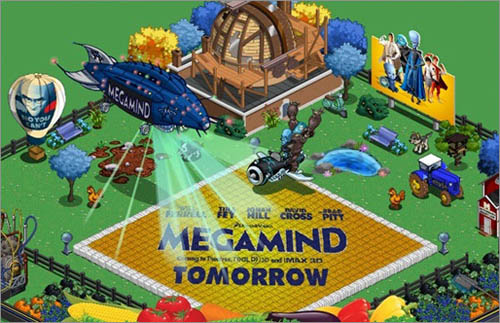Mobile Pie工作室高管称盗版只是一种“被免费”现象
游戏邦注:本文原作者是Mobile Pie工作室创意总监Will Luton,他认为盗版现象对应用开发商来说并不全是坏事,只要巧妙利用,开发商完全可以将盗版用户转化成对自己有价值的群体。
业内对iOS平台的应用盗版率看法不一,众说纷纭,有悲观报道称其比例高达96%,也有乐观者估计仅有1%,而《华尔街日报》所称的数据是75%,我认为75%这个比例较为符合我对付费应用的看法。
尽管不少开发商对此问题甚为不满,但不可否认的事情就是,盗版现象无孔不入,各个手机平台都难免此劫。尽管应用开发商、发行商和手机平台运营者,都在不遗余力地打击盗版行为,但目前仍无实际的解决方案。
Chris Anderson在《Free》一书中提到,“盗版是一种被强加的‘免费’,你原本并不打算免费供应产品,但市场还是会让你‘被免费’。”
Anderson的这个观点是立足于经济角度而非道德层面,盗版现象如此盛行的原因在于内容获取渠道的成本几乎为零,人人都可以一文不花,免费获取原来需要付费的内容。
这一点让那些采用了“渠道付费”模式的公司备受重创,在他们看来,这实际上是一种窃取开发商劳动果实的非法行为。他们认为这些盗版作恶者的行为应该接受法律制裁和道德审判。
我也曾经抱有这种想法。
但现在我认为这种看法并不正确,毕竟这是一个以销售数据而非实物商品为基础的行业。
与再买一辆汽车不同,用户获取翻版游戏仅需一些边缘成本(实际上是零成本)。如果盗版者可以免费玩游戏,那是因为他们拷贝了游戏。盗版者并没有从原版作者身上夺走什么实物,只是原版作者的所得会相对更少,但实际上他们并没有失去属于自己的东西,他们只是“被免费”了。
iOS平台排名靠前的综合游戏中,绝大多数属于付费产品,不过其数量正呈下降趋势。尽管目前还没有解决盗版现象的良策,但我相信开发商如果以对待免费服务游戏的态度,看待仿制自己产品的盗版现象,是可以将原来的损失转变为新的营收渠道。
将盗版现象看成“被免费”而不是“剽窃”,可以让开发商大获其益。
在采用免费模式的游戏中,开发商的营收基础是每月户平均投入,但大部分的用户从来不付费花游戏——但为何我们就能容忍这部分用户,又为何不以付费用户为基础来计算玩家的平均投入?
因为我们知道,非付费玩家从来就不等同于收益损失,而是一种有利的市场营销工具,是关注游戏的重要群体,也是潜在的付费用户。他们是这个生态圈中重要的一环,可以为开发商的服务创造价值,从而又通过多种方式让开发商进一步创收。
在市场推广领域这种表现尤为典型,广告公司经常观察某款应用的被浏览频率,用户的访问量,但他们并不在意这些用户是否付费。
以《FarmVille》为例,Zynga在该游戏中植入了Mega-Farm元素,推广梦工厂的《超级大坏蛋》这部电影,而EA的付费游戏《Skate》系列则植入了贴牌服装和装备,为游戏平添了更多真实感。这两种广告营销手段均不带有干扰性,并与游戏内容相得益彰。
但不同用户之间的看法很可能千差万别,免费游戏总会不时弹出建议购买付费内容的信息提示框,以便用户加快游戏进程或者获得更多功能。但如果付费游戏出现这些内容,可能就会激怒已付费的玩家,从而给游戏品牌造成消极影响,所以付费游戏通常要需谨慎考虑这种设置。
芬兰开发商Rovio就是一个富有远见的典型。
据该公司所称,约有40%的新用户采用了《愤怒的小鸟》中的“通关神鹰”这一付费功能,而该游戏的毛绒玩具也已经吸金2400多万美元。
当然,我们还可以换一个角度来看待盗版现象。盗版可以促使开发商创造新的关卡、道具等内容,从而使正品与山寨形成鲜明对比,这就会给你的游戏加分,让它更具竞争力和吸引力。另外,如果你采用了应用分析工具,就可以利用它优化游戏,提高产品质量,让它更加无可匹敌。
假如一位免费用户喜欢你的游戏,那么他们就会向好友推荐游戏,让你的游戏通过口碑传播提升知名度。所以不要过于纠结这个问题,关键是要在其中植入Facebook、Twitter、SMS和电子邮件分享按钮,这些用户可能购买游戏,也可能盗版游戏。他们的这两种选择,都会让你获益。
推出大规模的简装版和付费版促销活动、降价活动或者采取其他措施,有可能相对抑制盗版现象,但它们仍然无助于拓宽应用的利润空间。
有些开发商可能已经从免费模式中得到启发,接受这种“被免费”,并将其转化为一种优势和新营收渠道。(本文为游戏邦/gamerboom.com编译,转载请注明来源:游戏邦)
Mobile Pie’s Will Luton on how to turn pirates into useful mobile consumers
Will Luton is the creative director at the award-winning boutique studio Mobile Pie.
Reported piracy rates on iOS vary from 96 percent to 1 percent, with the Wall Street Journal claiming 75 percent; a figure which fits with my experience in paid.
Despite this rage, what is clear is that piracy is endemic on all mobile platforms. It is a reality of doing business, despite the work of trade bodies and platform holders.
Yet many approaches to it lack any realistic perspective.
Make the most of it
“Piracy is a form of imposed Free. You may not have intended your product to be free, but the marketplace thrust Free upon you.” – Chris Anderson, Free (2009).
Anderson’s argument, of which mine is an admiring xerox, is not one of ethics, but rather economics. Piracy is so prevalent because cost of distribution has fallen, ostensibly, to zero. People can offer access to content to each other for free, where content owners are charging.
This squeezes companies that execute on a ‘charge for access’ model. To them, not paying is theft from honest, hardworking developers. The perpetrators, they believe, don’t understand the economic reality of their actions. It should be tackled legally and with moral blackmail.
Turned on its head
That was once my thinking.
I now believe it’s incorrect, because of the realisation that our industry is predicated on the selling of data, not physical goods.
An additional game, unlike an additional car, has a marginal – effectively non-existent – cost. If a pirate plays a game without paying, they have made a copy. The pirate hasn’t taken something from the owner; nothing physical has been removed from them. The owner may have gained less, but they have not lost what was theirs. Free has been imposed.
Here, a pro-freemium rant would be easy, but ignorant.
The majority of top grossing games on iOS are straight paid-for titles, despite that number dwindling. Whilst there is no solution to piracy, I believe the thinking normally applied to free service-like games is already turning the pirates of some product-like games from lost gain to new revenue.
There’s a lot to benefit from seeing piracy as imposed free, not theft.
Be a free thinker
In free-to-play games, revenues are reported on an average per user basis, yet the majority never make a purchase. Why then, don’t we disregard them and count revenue only of users who pay?
Because a non-paying user is never lost revenue, but rather marketing, a pair of eyes and a potential paying customer. They are part of an ecosystem and generate value for the service and that value generates revenue in multiple ways.
This is particularly the case when it comes to advertising. Brands look at how often an app is viewed and by how many. They’re less concerned if the users have paid.
Using FarmVille, for example, Zynga created the Mega-Farm for Dreamwork’s Megamind, whilst the branded clothing and gear in EA’s paid Skate series added authenticity. Both are sympathetic and non-intrusive.
But the attitudes of the different users can be very different. In freemium games, paid propositions are constantly offered to the user, offering ease, quicker progression or more features. In paid games, these things may anger an already paid-up user, causing negativity, so need to be considered carefully.
Rovio is a great example of how to think more widely.
Angry Birds has two convincing upsells in The Mighty Eagle, which Rovio claim 40 percent of new users have taken advantage of it, and the plush toy range, which has already grossed in excess of $24 million.
Pirates on your team
Or look at it another way. Pirates can generate content, from building new levels or items to being an opponent in an online match. This adds value to your game, making it more enjoyable and appealing. Also, if you’re using analytics, they generate usage data, which can be applied to improve the game’s quality, making it more appealing.
Similarly, if a free user likes your game enough they will tell a friend. So, make it easy for them. Add in Facebook, Twitter, SMS and email share buttons. These people may then purchase the app or pirate it. Either way you benefit.
A strong strategy of lite and paid upsell, crack checks or other steps may well reduce piracy, but it will still remain an economic force during an app’s profitable life.
What developers can do, and some already are, is use techniques found in the free model to take the lesser gain of imposed and turn it to an advantage and new revenue.(source:pocketgamer)








































 闽公网安备35020302001549号
闽公网安备35020302001549号